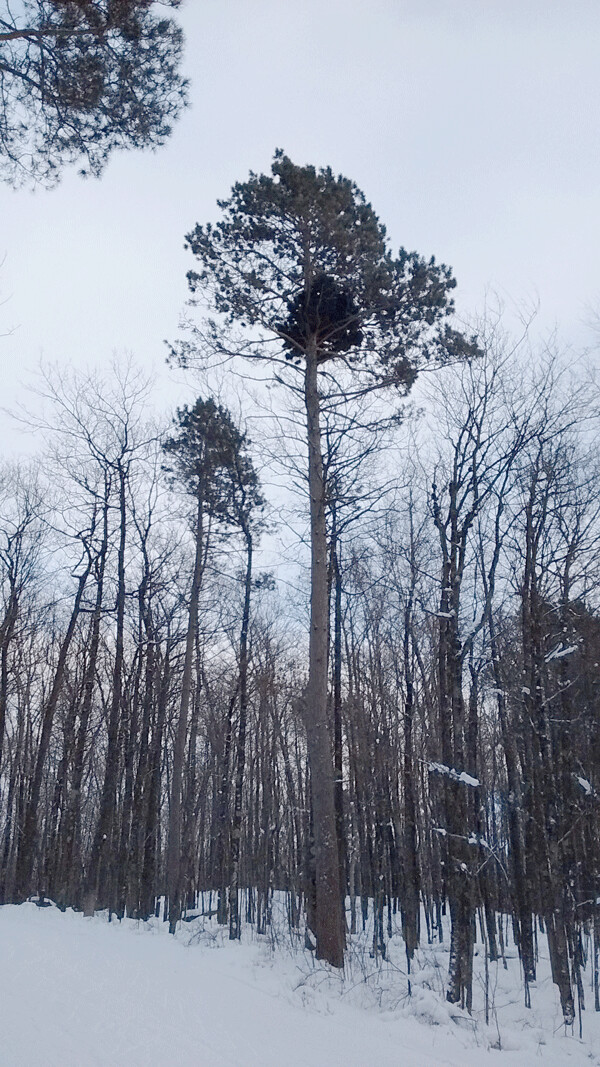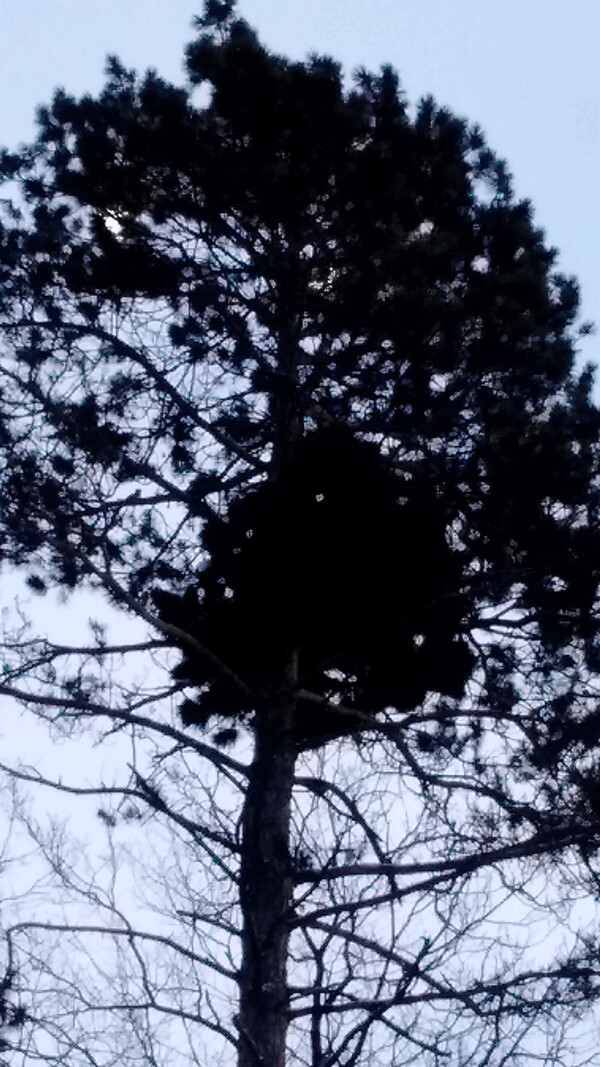Witches’ Brooms

This time of year, most of the nature I observe is along the cross-country ski trails in northwestern Wisconsin. Just a few days ago, I skied over a string of fresh red fox tracks. Occasionally a strong skunky odor accompanied them, and I looked a little closer to see which unfortunate pine seedling had been scent-marked. The tracks zig-zagged in and out of the woods, and eventually culminated in a fox-track party! This is the peak of their breeding season, so activity levels are high.
In among the fox tracks I started noticing foot prints from the fox’s largest cousin. Gray wolves are not uncommon here, and ski trails are some of their favorite highways. Wild animals enjoy easy travel as much as the rest of us because it helps conserve their hard-won energy. This particular gray wolf must have been eating well, because he also left a huge pile of scat right next to the ski tracks.
On a different ski, I spotted a tiny shrew franticly scurrying across the smooth snow of the skate-ski lane. When it reached the two parallel canyons of the classic tracks, an awkward scramble ensued to get itself up and over the humps. I chuckled at how different the world must look to each of us. Then, when it tunneled through the top skim of fluff just off the trail, I blinked in awe as it vanished. I’ve seen the results of this surface tunneling before, and always shook my head at how a little critter could think that nosing through just the top layer of flakes could hide it from the eyes of a watchful predator. I stood corrected…and alone…in the woods.
Sometimes I ski right past curiosities countless times before finally noticing them. That happened recently after I encountered friends on the trail who had a question. “What’s up with that big clump in a pine tree over by the second place the North End Trail crosses the Birkie Trail?” asked Irv and Jan Berlin. So I made a point to look up on my next loop out there, and then sent a photo to Paul Cigan, a Wisconsin DNR Forest Health Specialist, for his input.

“Cool find!” he replied. “I think I might have seen that very witches’ broom while out skiing.” Paul went on to explain that anything that kills a growing tip on a tree can instigate a thicket of new shoots that (if you use your imagination) looks like the business end of a broom. The name was coined in medieval Europe, and their homemade twig brooms bear an even stronger resemblance.
While anything from fungi to mites, mistletoe, bacterial parasites, and environmental insults can cause witches’ brooms, the most common initiator on pine trees, wrote Paul, is actually just a mutation of their own cells. An accident during cell division can result in an abnormal number of chromosomes in meristematic cells. Similar to a human stem cell, plant meristems are undifferentiated cells that can become a variety of different types of tissue. When dysfunctional meristem cells die, other shoots jump in to take their place. Or perhaps the meristems keep growing, but not in a normal way.
Because this witches’ broom is likely due to internal error and not a pathogen, it’s not at risk of infecting its neighbors. It might have a small negative impact on the tree itself, though, by sucking up nutrients that could be put to better use elsewhere in the tree. Paul speculated that “the one at the North End is moderately large and I would expect that it is reducing height, stem, and overall crown growth.”
On the other hand, some brooms have been observed to produce viable seeds that grow into dwarf trees. Humans have discovered that grafting a twig from a witches’ broom onto a normal rootstock can result in weird trees that collectors enjoy.
Sometimes, witches’ brooms can even play a positive role in the ecosystem. A type of moth uses the dense thicket to feed and shelter their larvae. Other critters, such as flying squirrels, might use them as a nest.
Fox tracks, wolf scat, mammal burrows, and witches’ brooms…what will I ski past next?
For 50 years, the Cable Natural History Museum has served to connect you to the Northwoods. Come visit us in Cable, WI! Our new exhibit: “Better Together--Celebrating a Natural Community” is now open!
